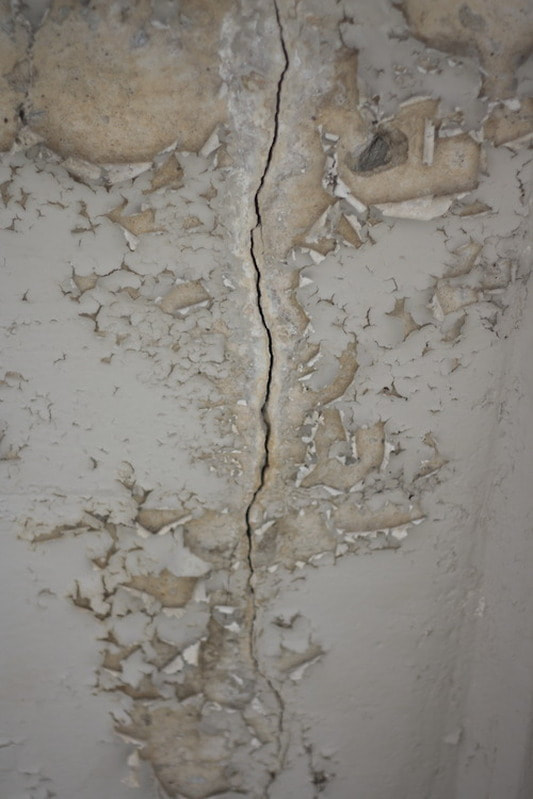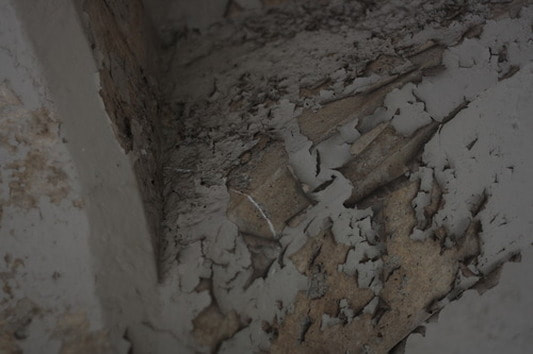How Photography Becomes Prayer
Photographs by June Xie
None of these cracks mean anything to me, because i do not speak their language. but they are dulled mirrors and i see layers peeling off of each other and wonder how deeply it goes, where the first layer is hidden underneath, but after all, the first layer is no longer relevant. and they are so lucky to be so insignificant: they are allowed to hide beneath the newer layers whose decay and weakness are unavoidably visible to all critics. the biggest cracks are also the most vulnerable to blameful stares, their presence a simple symbol for growing neglect, a popular apathy and lack of care. cracks become imbued with the abject, because they are reminders of our gradual and ultimate deterioration, and are direct reflections of how we tend to ignore growing problems, symptomatic of our habit of waiting with impatience for others to fix the problem, heavy with infant optimism.
-- June Xie
-- June Xie
Taking photographs from daily life, including photographs of cracks in sidewalks and buildings, can be a form of prayer. Sometimes it requires creative transformation for this to happen. Only after we lick the pots of sorrow and sing the saddest songs can our eye become clear and our prayer sincere. Only after the light has disappeared for a time, and we are honest about the brokenness, can the light shine through the cracks and help us see the sincerity of the cracks themselves.
-- Jay McDaniel
-- Jay McDaniel
|
How Photography Becomes Prayer
Let cracks represent the moments of brokenness in our lives: the times when we have drifted so apart from the world, or the world from us, that there is a vast separation and isolation and loneliness; the times when we feel so overwhelmed by forces beyond our control that we feel like Adam in Michaelangelo's painting, except the hand of God is a hand of brute power, oppressing us and preventing any movement; the times when things have been peeled away and we feel skinned and vulnerable, wishing only to be hidden and forgotten. We may find ourselves coming home at night and crying, or sleeping, or eating, or remembering, or forgetting. We feel lost in the cosmos and the cosmos is lost in us. In these times our only consolation may be to remain hidden from sight, out of the picture, behind the scenes, but with a wisdom that knows that all things decay in the end. All things end up quaking and breaking, and the quaking is a kind of physical and spiritual entropy. Whitehead calls it perpetual perishing. In these moments it can seem as if the only light that shines through the cracks is our own awareness of the quaking and breaking of everything. But gradually we realize that, amid the quaking and breaking, there's an odd kind of beauty in the particularities of life itself, no matter how fragile. Bikes with flowers on them are stationary but mobile. Autumn sleeves have their own unique patterns. Even the cracks and peels -- the ones we see with our eyes -- have a kind of beauty. They are themselves and nothing else. In the language of Buddhism, they are just this. Our seeing of the suchness is a kind of light, too, but it's not the light of wider vision, it's the light of focused vision: the kind made possible by a camera. And our very taking of the photos is a kind of light, too. It is an act of bearing witness to the world as it is, a way of saying "I am with you in your as-it-isness. I will remember you." This act of being with things, by means of photography, is a mysterious thing. On the one hand it frames things and has a controlling side. It is an act of power on the part of the photographer. But on the other hand it is a way of helping the things of the world show themselves, present themselves, not only to the photographer but to the world. In a strange way the photographer has entered into a quiet but healing ministry: a ministry of helping things share themselves. Like the pigeons in the image below, the photographer is stepping out on a ledge. In the stepping out there is a kind of courage. It is not the courage of doing bold things that everyone notices. But it is the courage of sharing something beautiful and specific. The Chinese have the idea that even rocks are sincere, because they are true to themselves. Some photography is a sharing of this kind of sincerity. The stepping out and sharing is an example of what process theologians call creative transformation. It takes the raw material of life, including the cracks both inner and outer, and makes something constructive out of them. It turns bitter grapes into sweet wine. It turns cracks into art. With whom or what does the photographer share? Obviously there is the hope that other people might benefit in some way from what is seen. The very act of sharing images on Facebook, or Instagram, or Tumblr, expresses this hope. But deep down there may also be a hope that what is seen is shared with a memory bank so deep and wide - a deep remembering -- that even as things fade from the world, they are remembered in the remembering, and loved for what they were. In process theology this remembering is God. When the photographer helps us take note of the contents of the divine remembering, she is helping us pray, too. She has become a priest to things as they are and a channel for our own stepping out onto the ledge. There are many kinds of prayer. Contemplative prayer helps us understand the world as it is, in its sheer particularity. Grieving prayer helps us lament the things that have happened that are sad and tragic. Protest prayer helps us critique the bizarre order of the world and work toward a just and sustainable future. Celebratory prayer helps us take heed of the flowering of life, the beauty, apart from and sometimes including the sadness. Laughing prayer makes us laugh. Sleeping prayer happens even when we don't know it. Introspective prayer helps us reflect on our lives and actions. Rhythm and blues prayer is prayer that you can dance to. Putting nail polish on a friend's fingers can be prayer if we are kind to the person we are helping. Most actions can become prayer if we want them to be prayer. All of them are gifts to the divine remembering. All form part of the objective content of the ongoing life of heaven, even as things pass away or lie buried in our forgetfulness. Muslims tell us that authentic spirituality begins with remembering a oneness to life that we have forgotten. Photography helps make good muslims of us all. -- Jay McDaniel |
The Quaking and Breaking of Everything
So the question, then, after the quaking and breaking subsides, is this: can we ever find solid ground again—a sense of reassurance that something is solid somewhere? The bleached, smooth corpses of trees, even in their stark demise, seem to answer in the affirmative. Of course time, nature's natural remedy, comes into play.... For it is only natural that when even a single tree is torn from its roots,we feel as though everything is lost; that this single brutality drowns out all other signs of life. Our eyes lock themselves firmly on the pain and injustice and waste of this beautiful tree, so that we soon identify with the pain, until finally, we are the pain. But we can stretch out our awareness a bit—slowly at first—until, one day, something within us suddenly breaks loose and we can see it: the whole, wide spacious sky. It is still there! We turn around to see verdant hills and mountains made of solid rock. They are still standing! We look toward the endless gray-blue sea still pounding out its ancient rhythm onto a welcoming shore. It is all still there! -- Patricia Adams Farmer in The Quaking and Breaking of Everything The Insights Born of Brokenness
Now there are people who resist the insights born of brokenness. One of the ways we most oppress ourselves is by assuming that we, alone, are shattered while everyone else is whole. We tell ourselves, "Look at that family, how perfect they are. Look at their home, how gorgeous and clean it always is", and we assume that we are the only fractured and broken vessels struggling to make meaning of our fragmented lives. Not only do individuals try to mandate a false wholeness, but there are social forces that seek to impose that same impossible perfection on us, telling us that if we are broken, we no longer retain any utility or worth. There are entire industries in this era — blogs, magazines, and films — dedicated to the self-hating proposition that we should feel fat, old, and ugly, that we should do surgery on ourselves, or straighten something, or bend some part, or snip something, or be lighter, or darker, and then, then we'll finally have dignity; then we'll be whole. -- Rabbi Bradley Artson More Photography from June Xie |
Video by June Xie
Aquaphobia. from june xie on Vimeo.





